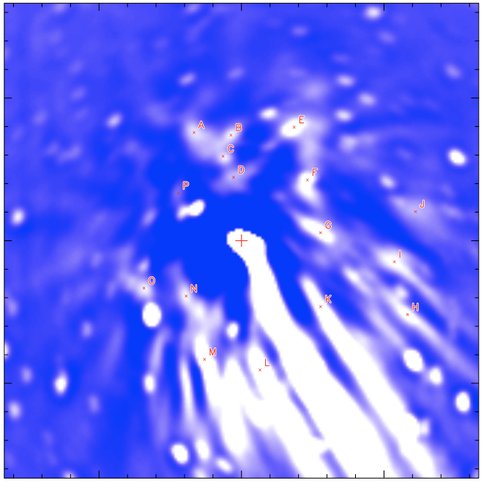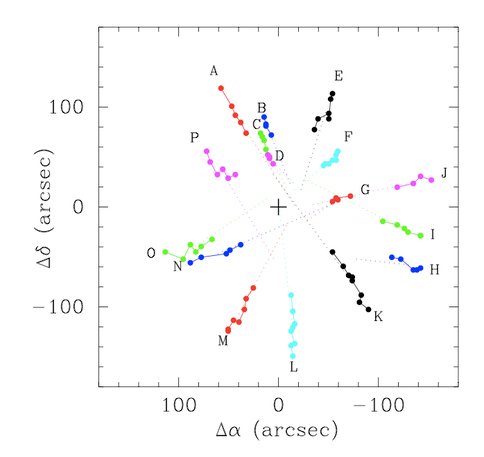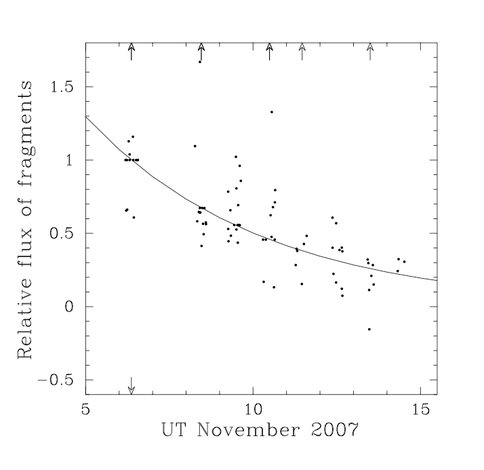2009 Annual Science Report
 University of Hawaii, Manoa
Reporting | JUL 2008 – AUG 2009
University of Hawaii, Manoa
Reporting | JUL 2008 – AUG 2009
Comet Holmes
Project Summary
We observed the outburst of Comet Holmes. Using image processing techniques, we inferred the existence of a large number of distinct fragments or subnuclei ejected at a velocity of 100 meters per second. We deduced that these subnuclei may consist of clusters of small particles, and were most likely expelled by a very efficient gas ejection process.
Project Progress
After 17P/Holmes underwent a late 2007 outburst, graduate student Rachel Stevenson acquired a unsurpassed data set consisting of UH 88” images, followed later by very large field CFHT images as the eruption expanded.
Stevenson, Kleyna, and Jewitt have completed and submitted a paper on this outburst showing that:
1. After Laplacian filtering the image (Figure 1), we detect outward moving fragments (Figure 2). These fragments converge in the past at the canonical time of the outburst.
2. These fragments are consistent with a space-filling radially isotropic distribution, or a cone along the line of sight.
3. The short 5 day exponential timescale of fading suggests that each fragment may be a cluster of sub-fragments (Figure 3).
4. The 100 m/s velocity of the fragments is inconsistent with 'rocket’ propulsion from asymmetrical sublimation. To achieve this velocity, it appears that gas ejection is required, and that the gas pressure must be converted to kinetic energy with high efficiency, hinting at some kind of deep eruption.
We are working on a second paper on comet Holmes, examining the behavior of a large amorphous feature ejected behind the comet, revealed by subtracting the main coma. So far, we have shown:
1. This second feature has a simple motion, kinematically distinct from the fragments above.
2. This second feature has a high velocity suggesting an entirely different physical process from the initial eruption.
Figure 1 – Laplacian filtered image of erupting comet Holmes. Fragments are diffuse bright spots in the coma.
Figure 2 – The motion of the fragments with time, over nine nights. The fragments appear isotropically distrubuted, and move at a constant velocity. The jagged nature of the trajectories reflects the noisy nature of the data, and the uncertainties of the detections.
Figure 3 – The fading of the fragments with time, after renormalizing them to a common brightness scale. It is fit well by a five day exponential falloff.
Publications
-
Stevenson, R., Kleyna, J., & Jewitt, D. (2010). TRANSIENT FRAGMENTS IN OUTBURSTING COMET 17P/HOLMES ,. The Astronomical Journal, 139(6), 2230–2240. doi:10.1088/0004-6256/139/6/2230
-
PROJECT INVESTIGATORS:
-
PROJECT MEMBERS:
David Jewitt
Co-Investigator
-
RELATED OBJECTIVES:
Objective 2.2
Outer Solar System exploration


